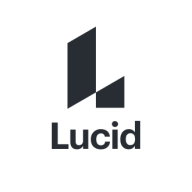

Find out what your peers are saying about SAP LeanIX, Sparx Systems, Quest Software and others in Enterprise Architecture Management.
| Product | Market Share (%) |
|---|---|
| iServer | 4.2% |
| LeanIX | 12.0% |
| Sparx Systems Enterprise Architect | 10.9% |
| Other | 72.9% |
| Product | Market Share (%) |
|---|---|
| Lucidchart | 24.3% |
| Visio | 29.6% |
| draw.io | 15.7% |
| Other | 30.39999999999999% |


| Company Size | Count |
|---|---|
| Small Business | 7 |
| Midsize Enterprise | 3 |
| Large Enterprise | 10 |
| Company Size | Count |
|---|---|
| Small Business | 23 |
| Midsize Enterprise | 14 |
| Large Enterprise | 21 |
iServer is a unified software platform and enterprise modeling environment that extends and enhances the familiar, market leading Microsoft Visio and Office products. Core capabilities provided by iServer include an enhanced Microsoft Visio diagramming interface, a powerful central repository for all enterprise architecture or business process models and documentation, and a range of tools for visualization, analysis and decision making.
Our online diagram application makes it easy to sketch and share professional flowchart diagrams. From brainstorming to project management, we support all of your communication needs. That’s why millions of users choose Lucidchart.
We monitor all Enterprise Architecture Management reviews to prevent fraudulent reviews and keep review quality high. We do not post reviews by company employees or direct competitors. We validate each review for authenticity via cross-reference with LinkedIn, and personal follow-up with the reviewer when necessary.